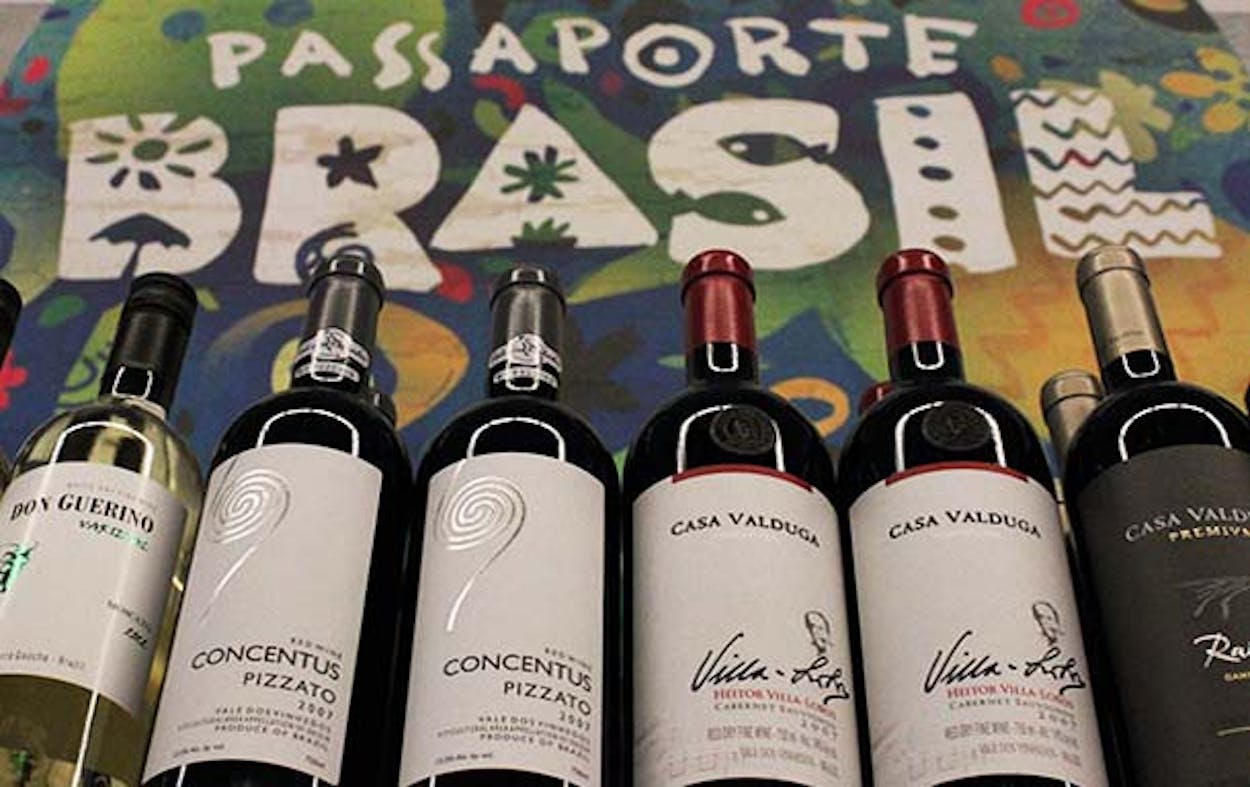Brazil is a dynamic country. It’s the largest country in South America with beaches that run for miles on end. Its vibrant, tropical atmosphere brings millions of tourists to its shores every year. In a game of word association, you will probably come up with a host of terms and mental images related to Brazil: samba, soccer, bossa nova, beaches, Carnaval. Wine probably isn’t the first thing that comes to mind, but it should. Brazilian vintages have a rich legacy dating back over a century, which gives these new world wines a distinct old world taste. Here are a few more reasons to pick up a bottle of Brazilian.
New world flavors in an old work framework. The grapes used to make Brazilian wine are grown mostly in the south of the country, where regions are much cooler than the better known areas around the popular cities of Sao Paulo and Rio de Janeiro. The climates in southern Brazil actually resemble the Piedmont region of Italy. The wines have bright acidity, lower alcohol levels, and evident minerality, but the flavors are fruit-forward similar to wines from California. Some say it’s the best of both worlds in a single bottle.
Sparkling success. It’s fitting that a country with such a celebratory nature would have an amazing collection of sparkling wines. As time has shown, the country is capable of making excellent sparkling wines, such as Miolo “Cuvee Tradition” Brut Rose and Casa Valduga “130” Brut. The sparkling wines of Brazil are diverse and range from sophisticated blends made in the traditional method to spot-on Moscatos and zesty Proseccos that can go toe to toe with their Italian counterparts.
Food Friendliness. With sharp acidity, balanced tannins, light oak, and moderate alcohol levels, Brazilian wines are perfect at the dinner table and pair just as nicely with either classic Brazilian fare such as feijoada or with world flavors like those of Europe, spicy South Asian, or American.
Here are a few must tries.
Casa Valduga “130” Brut NV
From Vale dos Vinhedos in Serra Gaúcha, this sparkling wine has an elegant and unforgettable bouquet of spices with a pleasant fruitiness, recalling almonds and tropical fruit. It has balanced acidity, with a broad full flavor from 60 percent Chardonnay and 40 percent Pinot Noir.
Salton Virtude Chardonnay 2011
Aged in new oak barrels for 6 months, this Chardonnay from Campanha Gaúcha is light yellow in color and has aromas of pineapple, melon, honey, vanilla, coconut, and toasted bread, in addition to mineral notes. The vintage is well balanced and has a structured flavor with firm acidity, leaving pleasant sensation of fruit and spice.
Pizzato Concentus 2007
Dense with a ruby-reds and purple colors this Merlot, Cabernet Sauvignon, Tannat blend from Vale dos Vinhedos has an immediate taste of red fruit jelly and fresh red fruit that is followed by spice, toasted cocoa, raisin, mocha, and earthy notes. The wine has a medium to heavy body, with a good balance of acidity and a long finish.
If you’re wondering where to start your Brazilian wine journey, then the wine experts at Central Market have you covered during Passaporte Brasil, for this two week celebration Central Market has imported more wine than any other U.S. retailer ever has to truly allow customers a chance to dive into this emerging wine region. Each store will not only have featured wines from throughout Brazil, but Central Market has invited a host of different winemakers from Brazil to be part of in-store demonstrations as well as wine dinners. Other than booking a flight to Sao Paulo, a trip to Central Market’s Passaporte Brasil will fill you with a deep love of Brazil and Brazilian-influenced wines, coffees, produce, culinary traditions, and more that they have to offer.
No member of the Texas Monthly editorial staff was involved in the production of this content. For more information about sponsor content, see our FAQ.






